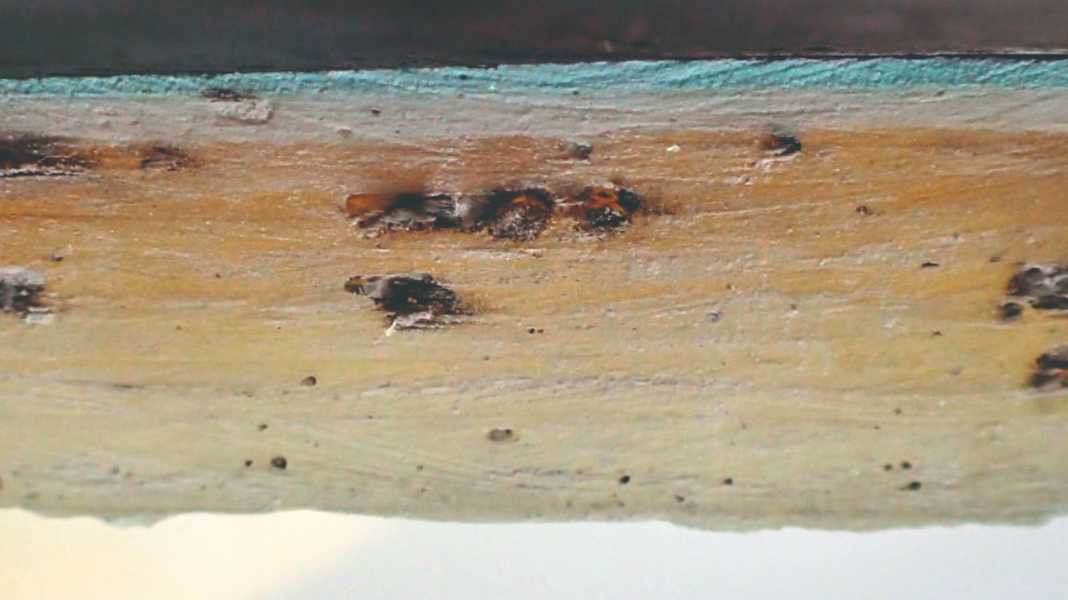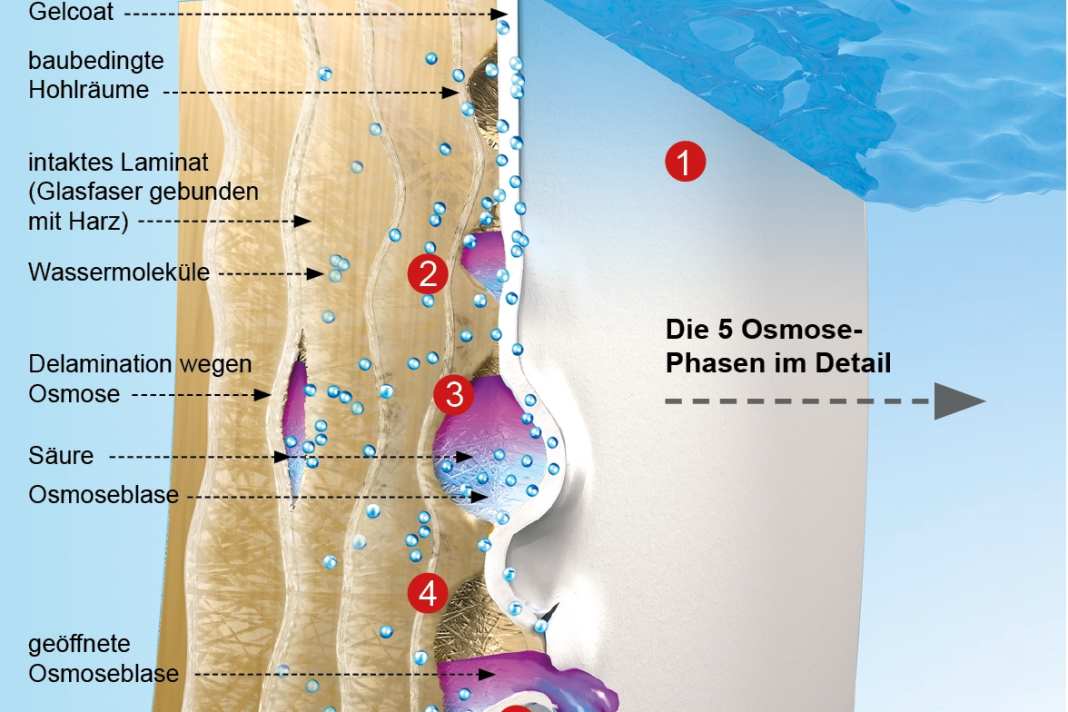Osmosis special, part 1: What is osmosis in sailing yachts, how does it occur?
YACHT-Redaktion
· 16.03.2023

You can read about this in the osmosis special:
- Part 1: The development of osmosis
- Part 2: Recognising osmosis reliably
- Part 3: DIY osmosis remediation
- Part 4: Osmosis remediation from a professional
- Part 5: Professional osmosis prophylaxis
The construction material of a GRP ship is what is known as glass fibre reinforced plastic (GRP). This involves glass fibres that are bonded together using a resin. The glass fibres can be loosely compressed glass strands (glass mat) or interwoven fibres similar to textiles (scrim, fabric, roving). The resin binds these fibres together, similar to an adhesive. Without fibres, the resin would only be a brittle plastic that would break quickly. Hence the term glass fibre reinforced plastic. The resin is usually an adhesive that is mixed from two components: the resin and the hardener. This can be polyester resin or epoxy resin. Polyester resin is usually used in boatbuilding for cost reasons. However, this is also more susceptible to osmosis than epoxy resin.
The phases of osmosis development






The outer layer of a yacht that is visible to the observer is the gelcoat. It consists of resin, usually polyester resin, which is filled with colour pigments and forms a smooth, coloured surface. Due to its high density, this gelcoat is actually intended to protect the laminate underneath from moisture.
Moisture diffuses into the laminate
However, no fabric is impermeable to water vapour. This also applies to polyester resins. Regardless of whether they are mixed as gelcoat or laminating resin, they are neither 100 per cent impermeable to water nor permanently water-resistant. The orthophthalic resins used in the early days of GRP boatbuilding are particularly susceptible. However, later isophthalic acid compounds are also affected. Today, vinyl ester resin is usually used, which can significantly delay osmosis.
In the course of time in the water, water vapour, or simply moisture, penetrates the GRP through the gelcoat by diffusion. This is a completely normal process for any yacht. Whether and to what extent damage occurs depends on which resins and reinforcing fibres the shipyard has used. Resins that are particularly resistant to hydrolysis delay the process. Equally important is the careful manufacture of the laminate, which depends on how carefully the boat builders have processed the materials. The rule of thumb here is: the fewer air pockets, the better.
Hydrolysis decomposes the resin
Because once it has passed through the gelcoat, the moisture collects in pores and cavities caused by the construction. It does not affect the glass fibres, the resin is the sore point of the system. The water reacts with the resin, especially with unreacted polyester curing residues, and decomposes it. This process is called hydrolysis. Acids are formed as a reaction product. These further decompose the resin and trigger osmosis.
Osmosis begins
The acid produced by hydrolysis has a higher density than the water in which the boat floats. The difference in density between water and acid triggers the osmosis process known from nature: the density gradient draws water into the laminate in order to equalise the acid density in the osmosis bubble with the water in which the boat floats. The gelcoat acts as a membrane. The osmosis fluid endeavours to dilute itself and therefore draws water into the hull.
In fresh water, the concentration gradients between the environment and the laminate required for osmosis occur more easily, which accelerates hydrolysis. Because of the higher density of salt water, the concentration gradient to the acid in the laminate is not as high as with fresh water
Osmosis bubbles form
Over time, more and more water diffuses into the hull, especially into the cavities where it collects. The penetrating water dissolves the laminating resin and together they form the acid. This acid wants to equalise with the water in which the boat floats and draws further water into the hull to dilute it. The pressure in these bubbles increases considerably, to the point where the gelcoat bulges outwards. Visible bubbles are formed.
This blistering of the gelcoat is then a sure sign that the ship is affected by osmosis. Only now is the osmosis damage recognisable.
As described above, the glass fibres are held together by the polyester resin. If the decomposition process of the resin continues permanently, the strong GRP laminate becomes glass fibres without cohesion - the boat first becomes unstable and then it literally disintegrates.
You can read about this in the osmosis special:
- Part 1: The development of osmosis
- Part 2: Recognising osmosis reliably
- Part 3: DIY osmosis remediation
- Part 4: Osmosis remediation from a professional
- Part 5: Professional osmosis prophylaxis

